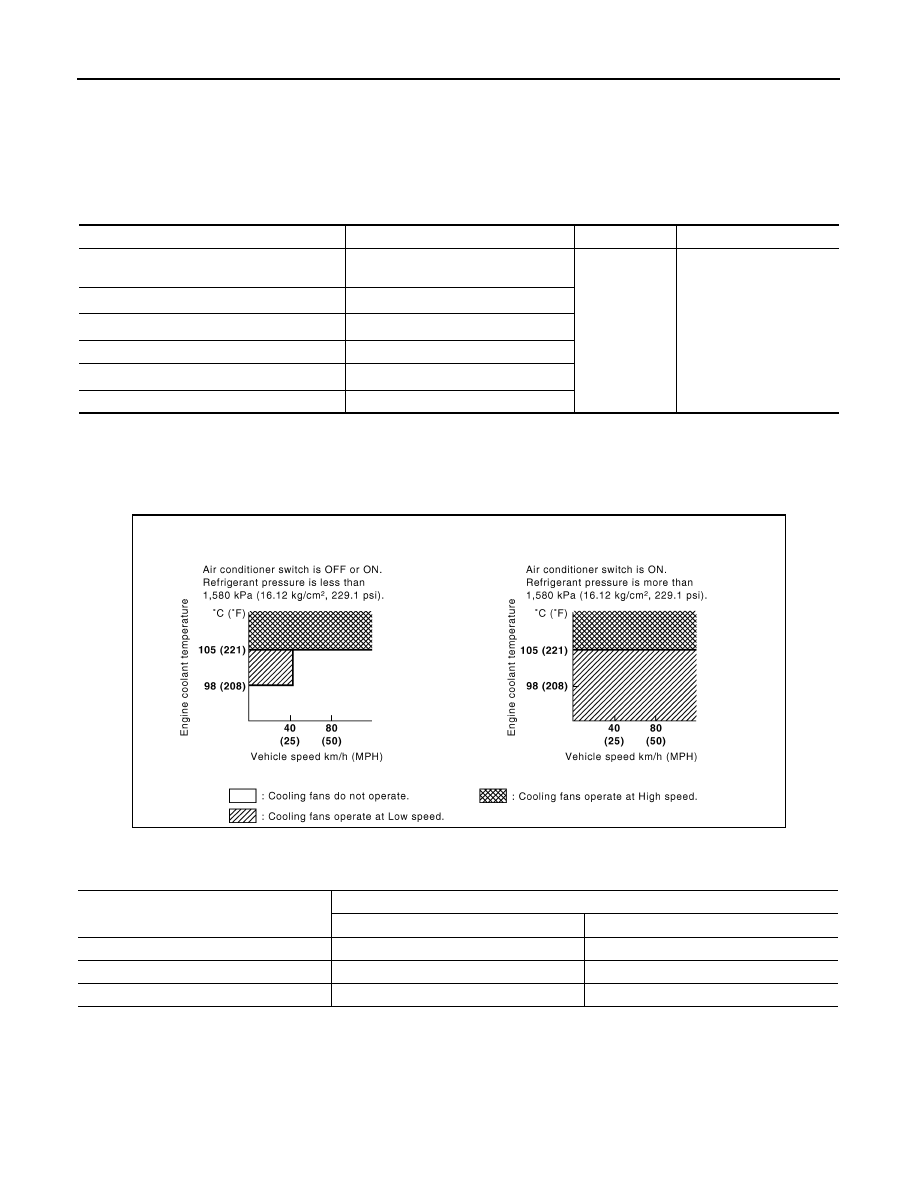Nissan Pathfinder (2010 year). Manual - part 244

EC-44
< FUNCTION DIAGNOSIS >
[VQ40DE]
COOLING FAN CONTROL
COOLING FAN CONTROL
Description
INFOID:0000000005257042
SYSTEM DESCRIPTION
Cooling Fan Control
*1: The ECM determines the start signal status by the signals of engine speed and battery voltage.
*2: This signal is sent to ECM via the CAN communication line.
The ECM controls the cooling fan corresponding to the vehicle speed, engine coolant temperature, refrigerant
pressure, and air conditioner ON signal. The control system has 3-step control [HIGH/LOW/OFF].
Cooling Fan Operation
Cooling Fan Relay Operation
The ECM controls cooling fan relays in the IPDM E/R via the CAN communication line.
Sensor
Input Signal to ECM
ECM function
Actuator
Crankshaft position sensor (POS)
Camshaft position sensor (PHASE)
Engine speed*
1
Cooling fan
control
IPDM E/R
(Cooling fan relays)
Battery
Battery voltage*
1
Wheel sensor
Vehicle speed*
2
Engine coolant temperature sensor
Engine coolant temperature
Air conditioner switch
Air conditioner ON signal*
2
Refrigerant pressure sensor
Refrigerant pressure
PBIB2531E
Cooling fan speed
Cooling fan relay
LO
HI
Stop (OFF)
OFF
OFF
Low (LOW)
ON
OFF
High (HI)
ON
ON
2010 Pathfinder